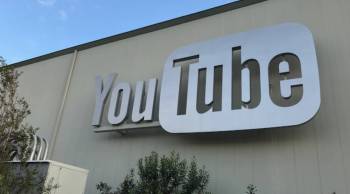The way we consume music has changed a lot over the last decade. Young people, the most valuable consumers, get their music on YouTube, Spotify, and other streaming sites.
But, one of the most interesting things about this new model is how breakout stars are launched — less often in a little club or underground music show, and more frequently, online, singing into a webcam, and uploading that video to YouTube.
And hope someone like Daniel Rosen spots you.
Rosen is a Senior Talent Manager for Fullscreen, a multi-channel network. His company manages artists and their YouTube and Vine networks. These YouTube artists go on tour, they sell merchandise. And the things they do, online and off, make them money.
Multi-channel networks tap into specific markets, gamers, teens, etc., and generates fan bases for “creators,” the people making videos. MCNs make money by selling ads that run before their videos, and most of their talent makes money from YouTube directly and from the advertisers who run content before their videos.
Bigger YouTube stars can also make money from brand deals. Rosen says Fullscreen just created a web series sponsored by Sour Patch Kids that feature Fullscreen artists in show about high school’s “sweet and sour moments.” And there are tours, and book deals, and all the other things that come with stardom.
What are things like for the people who have their big break online? Sam Tsui, a YouTuber and musician, says his rise to YouTube stardom has been bizarre.
Tsui got his start before multi-channel networks were branding videos and attracting multi-million dollar investments. He made his first videos while he was still in college, just to share with people beyond his immediate friend group.
When the numbers went up, Tsui realized that YouTube could be a platform that lead to bigger things. Now, fresh off an tour through Asia — Tsui says he was lead there by analytics, he has a big fan base in Asia — and a sold-out show at the Gramercy in New York, it’s clear that YouTube is big off-screen too.
But for Tsui, the intimacy of having an online fan base is important, even if it’s no longer a microcosm. YouTube fans put a heavy premium on interaction with artists, and being a part of someone’s story and rise to fame is important to them.
So is engagement, for both the artists and the fans. Tsui still has creative control over his work, owns his music, and even reads the comments.
There’s a lot happening in the world. Through it all, Marketplace is here for you.
You rely on Marketplace to break down the world’s events and tell you how it affects you in a fact-based, approachable way. We rely on your financial support to keep making that possible.
Your donation today powers the independent journalism that you rely on. For just $5/month, you can help sustain Marketplace so we can keep reporting on the things that matter to you.


















